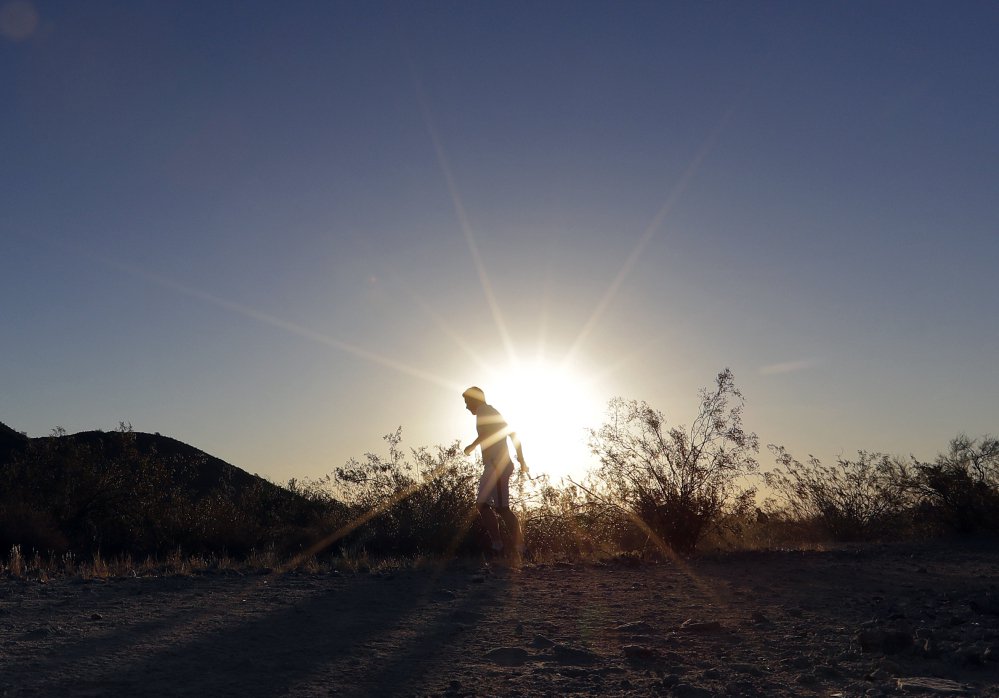LOS ANGELES — When bracing for 120 degrees, it’s all about the water.
Drinking it, splashing in it to stay cool, and drinking it some more. A lot more.
That’s what officials were urging and residents were planning Friday as a potentially record-shattering heat wave started enveloping the Southwest United States and threatened to bring temperatures of more than 120 degrees to parts of Arizona and California next week.
People in places like Palm Springs and Phoenix are used to seriously high temperatures, but 120 degrees becomes all the talk around the water cooler. And with the health dangers of heat and dehydration, that’s where authorities hope they keep coming back.
Teresa Flores in Phoenix said she will make sure her two sons and daughter stay hydrated.
“Water, water, water, water,” Flores said. “So even when they think they’re not thirsty, they’re drinking water.”
Jennifer Vollmann brought her 2-year-old daughter to a public pool in downtown Phoenix, where the temperature hit 108 Thursday. With 121 degrees predicted Tuesday, “we’ll be here, she’ll be in the pool,” Vollmann said.
Strong high pressure building over Western states is bringing the hot onslaught.
Officials warned of excessive heat across southern portions of Arizona and Nevada, and throughout the 450-mile length of California’s Central Valley. Almost the entire Golden State was predicted to simmer above normal temperatures, easing just short of the coast.
With up to 122 on the horizon, Palm Springs will have cooling centers in community centers and libraries, and Phoenix and nonprofit groups are planning water stations to help the homeless and others.
Palm Springs has soared above 120 several times, most recently hitting 122 on June 29, 2013.
The National Weather Service in Phoenix said the last time the temperature topped 120 was 1995, at 121. The record high is 122 degrees, set on June 26, 1990.
In the Arizona desert near the U.S.-Mexico border, the heat can be so deadly that the Border Patrol reassigns agents and resources to areas that are especially dangerous for immigrants.
“It is physically impossible for the average person to carry enough water to survive several days of walking through the desert,” the agency said.
Send questions/comments to the editors.



Success. Please wait for the page to reload. If the page does not reload within 5 seconds, please refresh the page.
Enter your email and password to access comments.
Hi, to comment on stories you must . This profile is in addition to your subscription and website login.
Already have a commenting profile? .
Invalid username/password.
Please check your email to confirm and complete your registration.
Only subscribers are eligible to post comments. Please subscribe or login first for digital access. Here’s why.
Use the form below to reset your password. When you've submitted your account email, we will send an email with a reset code.